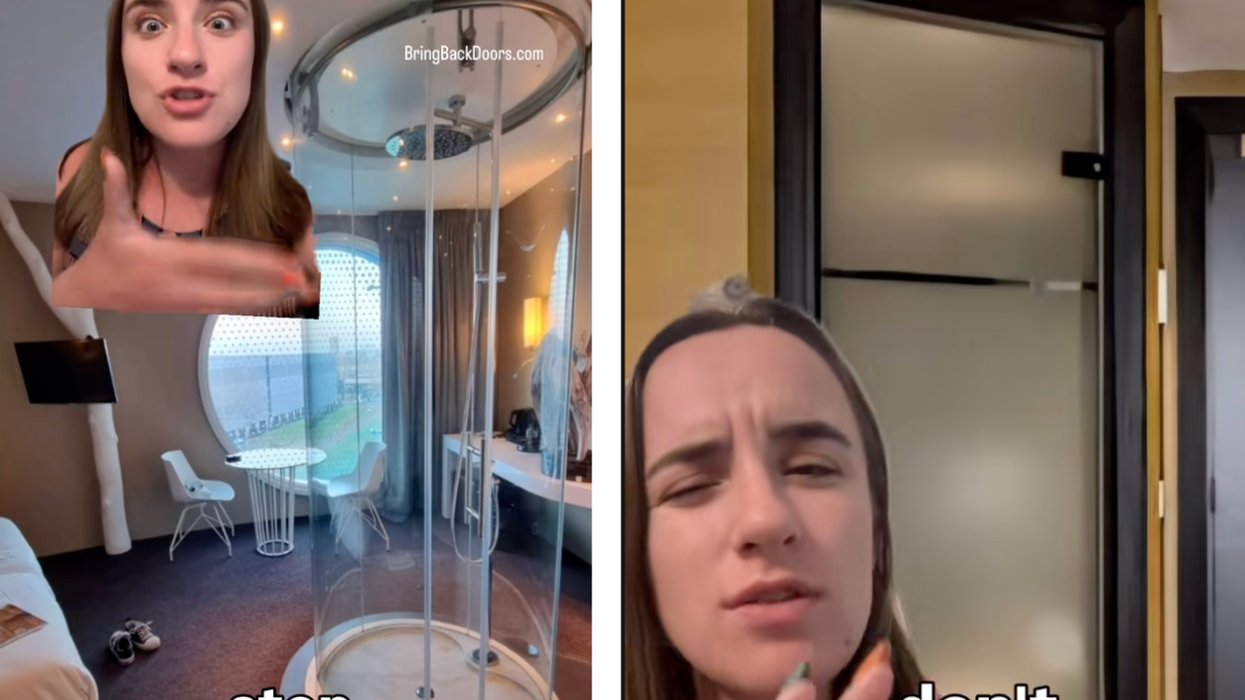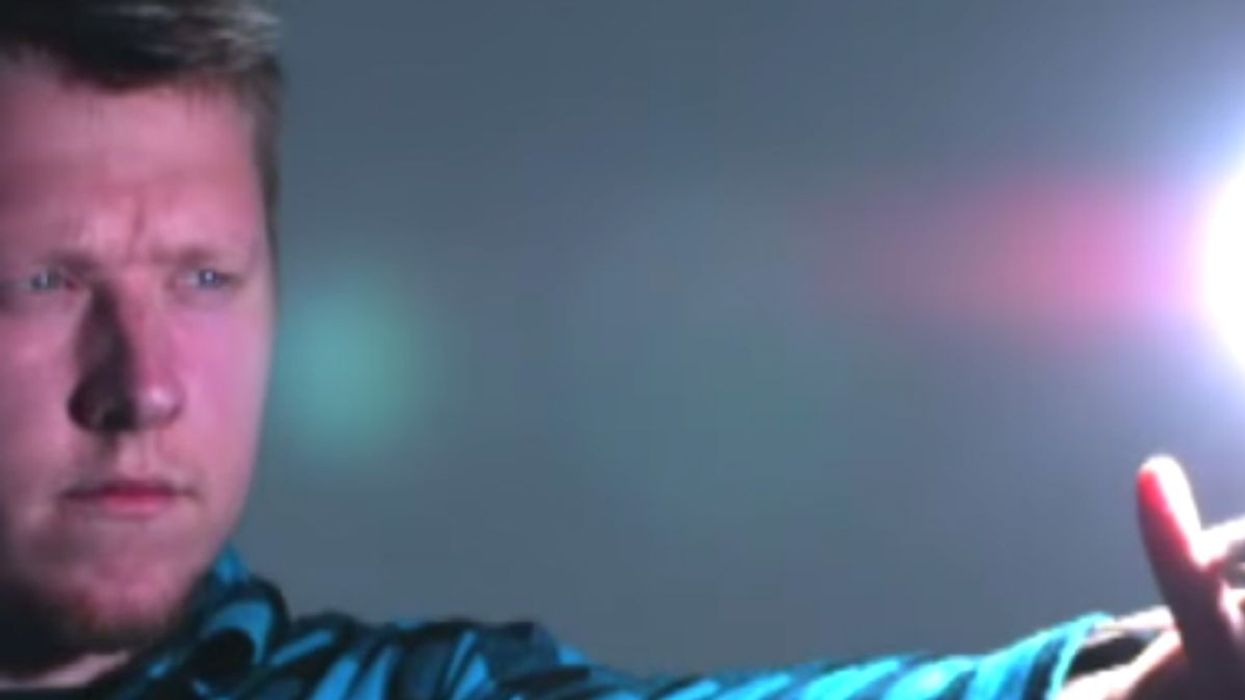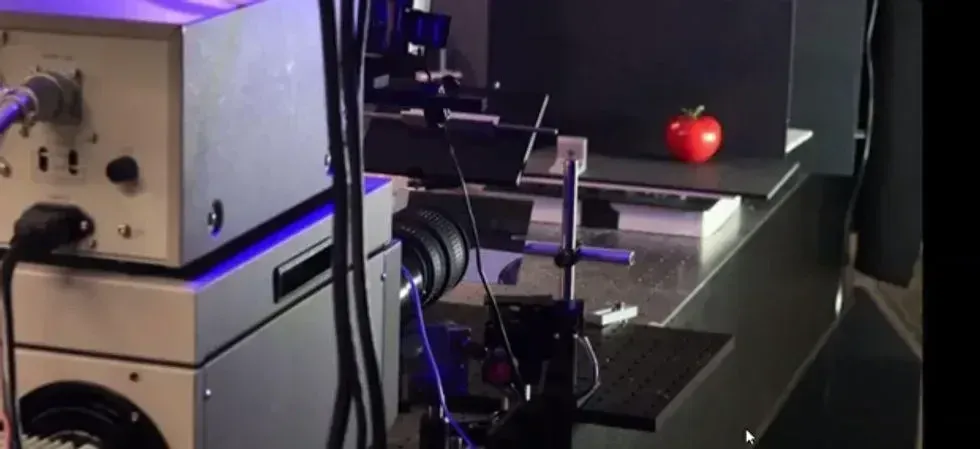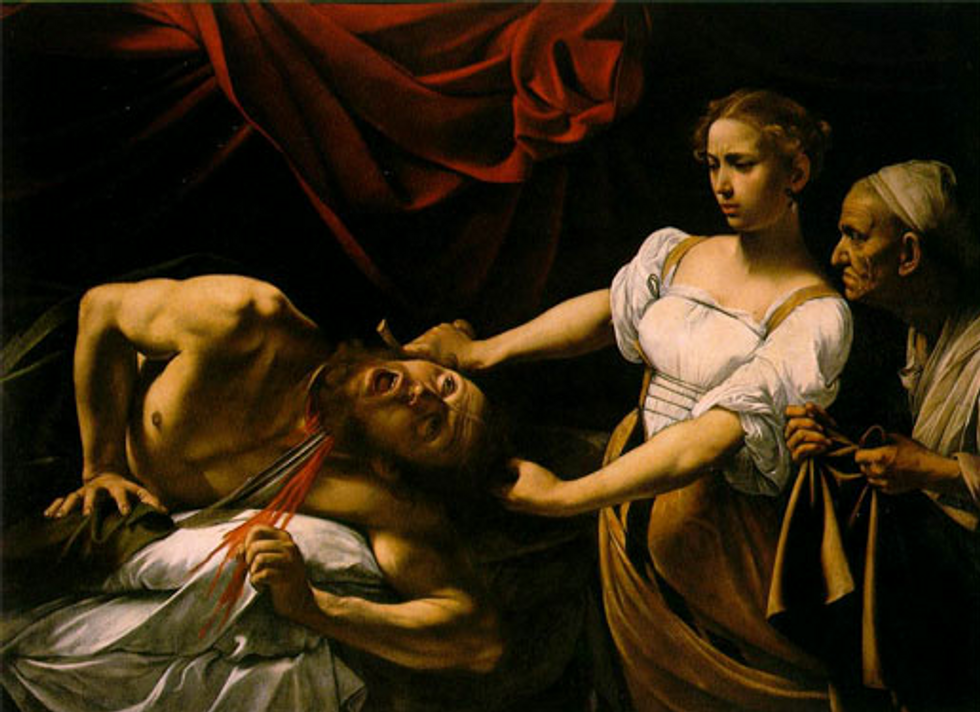Cyborg artist Neil Harbisson was diagnosed at 11 with a rare form of color blindness called achromatopsia: he could only see in shades of gray. Now, he’s the first person in the world to have a cybernetic antenna drilled into his skull that gives him trippy privileges—sound and visuals are interchangeable. He can see electronic music in rainbow hues (without drugs) and can hear paintings by Andy Warhol. Talk about a stimulating advantage.
Harbisson calls his resulting art “sonochronmatic,” an invented word to separate himself from those with synesthesia, a neurological condition in which two senses intertwine, such as the ability to taste, hear or feel color. His artwork is produced in two ways: he makes "sound portraits" of people by reading face notes and is a pioneer in the field of design technology and art as a cyborg artist.
As part of the (un)SCENE Art Show, which bills itself as celebrating “passion rather than fashion” and is running alongside New York’s famed Armory Arts Week from March 4 to 8, Harbisson will debut a satirical, almost gossipy performance piece called “Breaking News Bulletins from The Armory.”
“I’ll be walking around the Armory show and listening to people talk about art,” said Harbisson, who co-founded the Cyborg Foundation with his partner Moon Ribas, trumpeting “cyborgism” as an art movement. “When I hear people say an interesting sentence, I’ll transpose it to color and send the colors of the sentence to the (UN)Scene.”
Back at the show’s headquarters, they’ll have an interactive video screen, showing colored geometric shapes from Harbisson as he reads the sounds of people and art. “This is an attempt to have some fun with our big brother one block down the street,” said (UN)Scene curator Mikel Glass. “The initiative with Neil is a big, public, untested experiment.” It’s also the first year the show is including a tech artist section, including Harbisson and five others in collaboration with Hyphen Hub, New York’s foremost art and technology non-profit.
Harbisson will also be doing his trademark “sound portraits” (translating faces and their “hues” into a minute-long mp3), which he began in 2005 after “drawing” Prince Charles. He reads the notes of people’s faces with his antenna, writes down the notes of their face and gives them the score. “You can hear the layers of the face,” said Harbisson, who will exchange portraits for a Hyphen Hub membership. “The skin, hair, and the eyes, in the end, you hear the whole chord, the face.”
Not only that, Harbisson will be creating a sound portrait of an original old master painting by Giovanni Battista Beinaschi, called The Martyrdom of Saint Peter, on loan from dealer Robert Simon. “I have this antenna,” he said in reference to his color-hearing prosthesis, “so it’s going to be transposing the sounds of the colors of the paintings with the audience and then listening to the colors of the paintings together. It will be the first time I hear the painting, it will be new for all.”
This isn’t the first time Harbisson will be able to hear any painting, however. The best paintings, he says, are by Warhol and Joan Miró because they have a clear sound—Diego Velázquez and Edvard Munch painted in similar-sounding hues and Harbisson likens the net effect to horror music.
“I can't wait to get him in front of the painting, translating its colors into music, watch the crowd and see if it resembles the image that I have already sketched into my mind,” said Glass. “I think it will reveal that Beinaschi and Harbisson are more alike than they are different—they will both be represented at about the same age and career trajectory as one another, they are both driven by purpose and passion. They both ingeniously utilize the most contemporary tools of their respective times in order to express themselves.”
“Maybe it won’t be unusual to hear colors in 100 years, maybe many people will have sensory extensions and artists will have new senses so people can perceive paintings in different ways,” said Harbisson.
Next up, Harbisson is working with astronomers to connect his antenna to the galaxy. “It’s really exciting, there are so many more colors out in space,” he said. “For me, it will be like having a third eye. It’s like sending your senses to space.”
















 TikTok · Bring Back Doors
TikTok · Bring Back Doors 



 Label for Middle Earth Organics' Organic Tomato & Porcini Mushroom Sauce
Label for Middle Earth Organics' Organic Tomato & Porcini Mushroom Sauce "Judith Beheading Holofernes" by Caravaggio (1599)
"Judith Beheading Holofernes" by Caravaggio (1599)